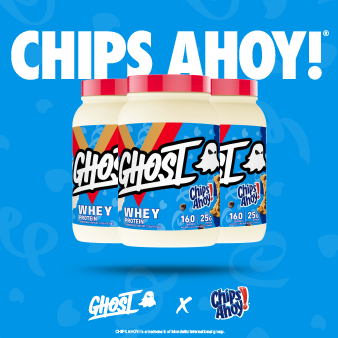We all know that eating the same thing every week can get old. That is why we are constantly changing up our protein sources. We also change up our protein powder flavors. Having the same thing over and over not only gets old when it comes to taste, we are also neglecting our bodies of important nutrients that we can get from other like sources. This is why it is important to change up your grain source of carbohydrates.
The purpose of this article is NOT to get you to stop eating rice. Rice is a great grain sourced carbohydrate source that promotes muscle building. Rice is good. The purpose of this article is to get you to open our eyes to other beneficial sources of grain sourced carbohydrates that will give you an alternative taste profile and additional health benefits you do not get from rice.
Glycemic Index
[/vc_column_text][vc_row_inner column_margin=”default” text_align=”left”][vc_column_inner column_padding=”no-extra-padding” column_padding_position=”all” background_color_opacity=”1″ width=”1/2″ column_border_width=”none” column_border_style=”solid”][vc_column_text]Before we get into our top five alternatives to rice when it comes to grain sourced carbohydrates it is important to educate yourself with the glycemic index (GI). The glycemic index is a number that is associated with a food type that indicates the effect it has on your body’s blood sugar.
Quinoa
Glycemic Index: 53
Quinoa is one of my favorite grains to consume. In fact, I enjoy it more than rice. Quinoa originated in the Andes over 4,000 years ago and was known by the people as “the mother of all grains.” Quinoa doesn’t only have a great GI score, but it also has a good amount of carbohydrates and proteins per 100 grams.[/vc_column_text][vc_column_text css=”.vc_custom_1509576343059{padding-bottom: 24px !important;padding-left: 40px !important;}”]Amount per 100g
Calories: 120
Carbohydrates: 21g
Fats: 2g
Proteins: 4g[/vc_column_text][vc_row_inner column_margin=”default” text_align=”left”][vc_column_inner column_padding=”no-extra-padding” column_padding_position=”all” background_color_opacity=”1″ width=”2/3″ column_border_width=”none” column_border_style=”solid”][vc_column_text]There are over 120 species of quinoa but the most popular are white, red and black. All three of these have similar nutritional properties. Most grocery stores will sell quinoa, however if you cannot find it in a local grocery story by you then click here to purchase it online.
Quinoa is paired well with chicken and fish and any vegetable source. However, quinoa is so good it can go with anything! A quinoa salad is also a popular choice.[/vc_column_text][/vc_column_inner][vc_column_inner column_padding=”no-extra-padding” column_padding_position=”all” background_color_opacity=”1″ width=”1/3″ column_border_width=”none” column_border_style=”solid”][image_with_animation image_url=”3394″ alignment=”center” animation=”Fade In” box_shadow=”none” max_width=”100%”][/vc_column_inner][/vc_row_inner][vc_column_text css=”.vc_custom_1509576436346{padding-bottom: 24px !important;}”]
Farro
Glycemic Index: 40
Farro is another great grain sourced carbohydrate that can typically be found in your local grocery story. Farro originated back in the Roman Empire where it was traded quite regularly. Farro has a nice GI score it also has a complete profile for your gains (over double the carbs than quinoa).[/vc_column_text][vc_column_text css=”.vc_custom_1509576452694{padding-bottom: 20px !important;padding-left: 40px !important;}”]Amount per 100g
Calories: 320
Carbohydrates: 64g
Fats: 3g
Proteins: 10g[/vc_column_text][vc_row_inner column_margin=”default” text_align=”left”][vc_column_inner column_padding=”no-extra-padding” column_padding_position=”all” background_color_opacity=”1″ width=”1/3″ column_border_width=”none” column_border_style=”solid”][image_with_animation image_url=”3395″ alignment=”center” animation=”Fade In” box_shadow=”none” max_width=”100%”][/vc_column_inner][vc_column_inner column_padding=”no-extra-padding” column_padding_position=”all” background_color_opacity=”1″ width=”2/3″ column_border_width=”none” column_border_style=”solid”][vc_column_text]As I mentioned earlier farro can be found in most grocery stores. However if you cannot find it at your local marketplace visit this link here to purchase online.
Farro is used mostly as a salad proponent or in soups. However, farro can be used as a side dish. It is paired well with chicken and shrimp.[/vc_column_text][/vc_column_inner][/vc_row_inner][vc_column_text css=”.vc_custom_1509576551775{padding-bottom: 24px !important;}”]
Barley
Glycemic Index: 45
Barley originated in Western Asia and is known for it versatility in food preparation. We typically see barley used in breads and cereals but it is also used in soups and beers. Finding whole grain barley at your grocery store might prove to be difficult so to make it easy on you click here to purchase it.
Barley has a mid-tier GI score which makes it very attractive for us health nuts. It’s macro profile also provides many benefits to those of us interested in putting on size.[/vc_column_text][vc_row_inner column_margin=”default” text_align=”left”][vc_column_inner column_padding=”no-extra-padding” column_padding_position=”all” background_color_opacity=”1″ width=”2/3″ column_border_width=”none” column_border_style=”solid”][vc_column_text css=”.vc_custom_1509576572262{padding-bottom: 24px !important;padding-left: 40px !important;}”]Amount per 100g
Calories: 352
Carbohydrates: 78g
Fats: 1g
Proteins: 10g[/vc_column_text][vc_column_text]As mentioned earlier barley is traditionally used in breads and cereals but you can prepare it by steaming it or in a soup. Steamed barley with fish is very good. Barley can also be paired well wish a chicken dish. Chicken stock can be used as flavoring but be careful not to use too much as the sodium content is quite high in chicken stock.[/vc_column_text][/vc_column_inner][vc_column_inner column_padding=”no-extra-padding” column_padding_position=”all” background_color_opacity=”1″ width=”1/3″ column_border_width=”none” column_border_style=”solid”][image_with_animation image_url=”3396″ alignment=”center” animation=”Fade In” box_shadow=”none” max_width=”100%”][/vc_column_inner][/vc_row_inner][vc_column_text css=”.vc_custom_1509576634421{padding-bottom: 24px !important;}”]
Spelt
Glycemic Index: 40
Spelt first originated in Central Europe and is known for it’s variety of uses. Spelt is used to make cereal, pretzels, bread, buns and more. You will typically find spelt in a flour form but you can buy the whole grain form by clicking here.
Spelt has a great GI index and a very nice macro profile to correspond with the GI score.[/vc_column_text][vc_row_inner equal_height=”yes” content_placement=”middle” column_margin=”default” text_align=”left”][vc_column_inner column_padding=”no-extra-padding” column_padding_position=”all” background_color_opacity=”1″ width=”1/3″ column_border_width=”none” column_border_style=”solid”][image_with_animation image_url=”3397″ alignment=”center” animation=”Fade In” box_shadow=”none” max_width=”100%”][/vc_column_inner][vc_column_inner column_padding=”no-extra-padding” column_padding_position=”all” background_color_opacity=”1″ width=”2/3″ column_border_width=”none” column_border_style=”solid”][vc_column_text css=”.vc_custom_1509576655030{padding-bottom: 24px !important;padding-left: 40px !important;}”]Amount per 100g
Calories: 338
Carbohydrates: 70g
Fats: 2g
Proteins: 15g[/vc_column_text][vc_column_text]Spelt as a flour can be used to make bread and desert dishes. As a whole grain you can use spelt and pair it well with chicken and fish in both hearty meals and salads. Give this grain a try and watch your gains rise high![/vc_column_text][/vc_column_inner][/vc_row_inner][vc_column_text]
Bulgur
Glycemic Index: 45
Bulgur is another great grain sourced carbohydrate with a very nice GI score. Bulgur is typically found in natural food stores but if you cannot find it at your local natural food store click here to purchase it online.
Bulgur is typically found in European and Indian cuisine but is picking up steam, no pun intended, in America. This is because of it’s health benefits and its macro profile.
Calories: 342
Carbohydrates: 76g
Fats: 1g
Proteins: 12g[/vc_column_text][vc_column_text]Bulgur is typically found in bakery goods but can be used in soups and as a nice base for your chicken dish. Make a nice warm chicken salad with bulgur and enjoy watching your gains grow. The rich macro profile makes this a must try for any fitness and health enthusiast.[/vc_column_text][/vc_column_inner][vc_column_inner column_padding=”no-extra-padding” column_padding_position=”all” background_color_opacity=”1″ width=”1/3″ column_border_width=”none” column_border_style=”solid”][image_with_animation image_url=”3398″ alignment=”center” animation=”Fade In” box_shadow=”none” max_width=”100%”][/vc_column_inner][/vc_row_inner][vc_column_text]
Conclusion
These are just five really good alternatives to rice. Expand your meal options to include things outside of your comfort zone. You can look online for awesome recipes utilizing these ingredients online![/vc_column_text][/vc_column][/vc_row]






